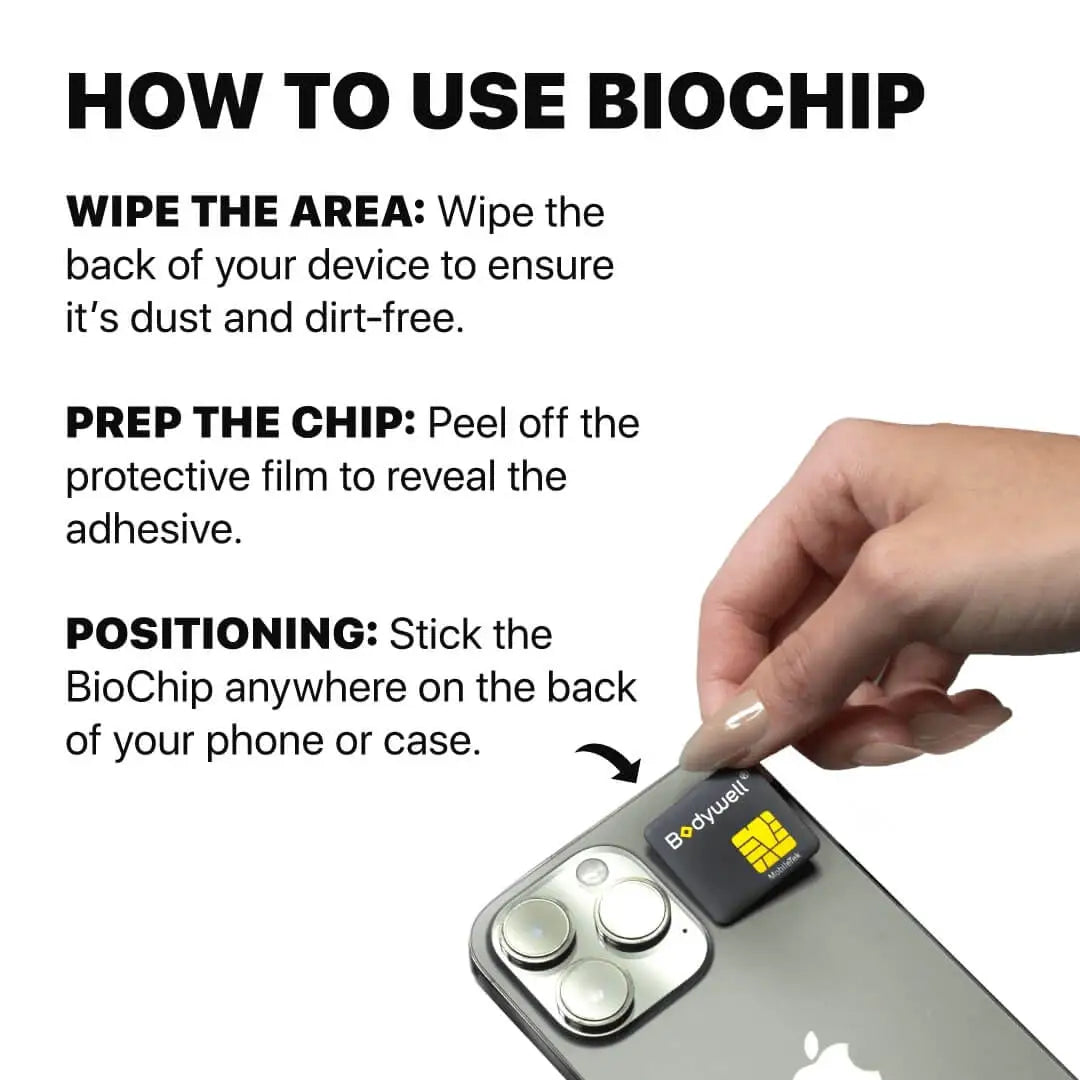In our modern, tech-driven world, concerns about electromagnetic fields (EMF) and their potential health impacts are on the rise. From cell phones to Wi-Fi routers, we're surrounded by EMF radiation. But what are safe EMF levels for humans, and how much EMF is dangerous?
How Much EMF is Safe for Humans?
The safety of EMF exposure is a topic of ongoing research and debate. However, several international organizations have established guidelines to help determine safe exposure levels. According to the World Health Organization (WHO) and other regulatory bodies, the safe exposure limit for EMF radiation is typically set at 0.08 microteslas (µT) for residential areas and 0.4 µT for occupational settings. These guidelines are primarily focused on the potential health effects of extremely low-frequency (ELF) EMF, such as those emitted by power lines and household appliances.
High-Frequency EMF vs. Low-Frequency EMF

EMF Fields are classified into three major categories. Magnetic fields, electrical fields, and high-frequency electromagnetic fields (RF).
When discussing safe exposure levels, it's essential to differentiate between high-frequency and low-frequency EMF.
High-frequency EMF, also known as radiofrequency (RF) radiation, is emitted by wireless communication devices like cell phones, Wi-Fi routers, smart meters, iPads, Smartwatches, cell towers, wireless chargers, and Bluetooth-enabled devices. These high-frequency electromagnetic fields, which range from 100 kilohertz (kHz) to 300 gigahertz (GHz), are employed for wireless transmission. In contrast to low-frequency EMF, high-frequency moves wirelessly, at light speed, and over great distances.
Low-frequency EMF, on the other hand, is generated by power lines, electrical wiring, electrical boxes, transformers, and household appliances such as electric blankets, televisions, hair dryers, computers, etc. Low-frequency electromagnetic fields are classified into two types: electric fields and magnetic fields. Electric fields can be efficiently shielded, but magnetic fields cannot since they move in a circular pattern and are not directional.
Let's talk about what electric fields and magnetic fields are.
Electric fields are forces that drive charged particles (such as electrons or protons) to move. The passage of electrons in an electric field causes electric current to occur. The strength of an electric field is measured in volts per meter (V/m) or, for greater fields, in kilovolts per meter (kV/m), where one kilovolt equals 1000 volts.
When charged particles move, they form a magnetic field. The strength of a magnetic field can be stated in several units, such as tesla (T), microtesla (µT), and gauss (G), where one G equals 100.
International EMF Safe Levels & Safety Standards
Understanding international guidelines and safety standards regarding electromagnetic fields (EMF) is crucial for assessing potential risks and ensuring public safety. Various organizations and regulatory bodies worldwide have established standards to guide the safe use and exposure to EMF radiation.
The International Commission on Non-Ionizing Radiation Protection (ICNIRP) is one of the leading authorities in setting guidelines for EMF exposure. Their guidelines cover both low-frequency and high-frequency EMF, providing limits for exposure to fields such as those produced by power lines, electrical appliances, and wireless communication devices.
For extremely low-frequency (ELF) EMF the ICNIRP recommends a reference level of 100 microteslas (µT) for general public exposure. Occupational exposure limits are typically higher, reflecting the potential for increased exposure in certain work environments.
When it comes to high-frequency EMF, the ICNIRP sets limits based on a specific absorption rate (SAR), which measures the rate of RF energy absorbed by the body. For the general public, the ICNIRP recommends SAR limits of 2 watts per kilogram (W/kg) averaged over 10 grams of tissue.
In addition to the ICNIRP, other organizations, such as the World Health Organization (WHO) and the Institute of Electrical and Electronics Engineers (IEEE), also guide EMF exposure limits. While there may be some variations in specific recommendations, these organizations generally align on the importance of limiting exposure to EMF radiation to protect public health.
EMF Radiation You Don't Control
For average individuals, these guidelines may be hard to follow and, in some cases, impossible. For example, you may work in certain occupations and may be exposed to higher EMF levels than 10μT from sources such as power lines and electric devices.
In these cases, using appropriate protective devices and following safety precautions during work hours should be your priority. It is also advisable to limit your exposure to any EMF source.
In summary, while WHO and ICNIRP have set guidelines to limit EMF exposure to less than 10μT, you need to understand your own EMF exposure levels and act responsibly to limit overexposure.
How to Measure RF Levels in Your Homes?
To assess your exposure to RF radiation within your home, you can use an EMF meter. These gadgets are available online or at your local hardware store. These devices measure the strength of electromagnetic fields emitted by various sources, allowing you to identify areas of high RF exposure. Common sources of RF radiation in the home include Wi-Fi routers, cordless phones, and microwave ovens.
Once you've got your meter, switch off all electronic devices in your home to ensure accurate readings.
Power up your EMF meter and take readings in various spots throughout your home.
Record the readings and compare them to the following safe levels:
- Magnetic fields: 0.5 milligauss (mG) or less
- Electric fields: 10 volts per meter (V/m) or less
- Radiofrequency (RF) radiation: 0.1 microwatts per square centimeter (µW/cm²) or less
When shopping for an EMF meter, consider these key features:
- Type of EMF radiation detected: Ensure the meter can see the kind of EMF radiation you're concerned about.
- Range: Opt for a meter with a wide detection range.
- Accuracy: Choose a meter known for its high accuracy.
- Display: Look for an easy-to-read display.
- Alarms: Seek out a meter with sound and light alarms that alert you when EMF levels exceed safe limits.
- Battery life: Long battery life is a major plus.
Some popular EMF meters on the market include the Trifield TF2, Cornet ED88T, and Acoustimeter AM-10, all available on Amazon.
By mastering the art of measuring EMF radiation, you're taking control of your environment, empowering yourself to live a happier, healthier life, and inspiring others to follow suit.
How Do You Lower The Level Of EMF You're Exposed To?
To reduce your exposure to EMF radiation, consider the following tips:
- Limit cellphone use: Use a speakerphone or a headset to keep your cell phone away from your body.
- Minimize Wi-Fi exposure: Turn off Wi-Fi, Bluetooth, and GPS when not in use and consider using Ethernet cables for internet connectivity.
- Create distance: Keep electronic devices away from your body while in use, and avoid placing them near your bed while sleeping.
- Use Bodywell® EMF protection products: Consider using EMF Radiation protection products to shield yourself from harmful radiation. Bodywell® uses advanced technology to absorb up to 80% of EMF radiation and reduce the adverse effects that it can have on your body. So if you're looking to protect yourself from the dangers of EMF, the BioChip is your best bet.
Final Thoughts
While the debate over the safety of EMF radiation continues, taking proactive steps to minimize your exposure can help reduce potential risks. By understanding safe radiation levels of EMF and implementing practical strategies to lower your exposure, you can enjoy the benefits of modern technology while safeguarding your health.






















Leave a comment
This site is protected by hCaptcha and the hCaptcha Privacy Policy and Terms of Service apply.